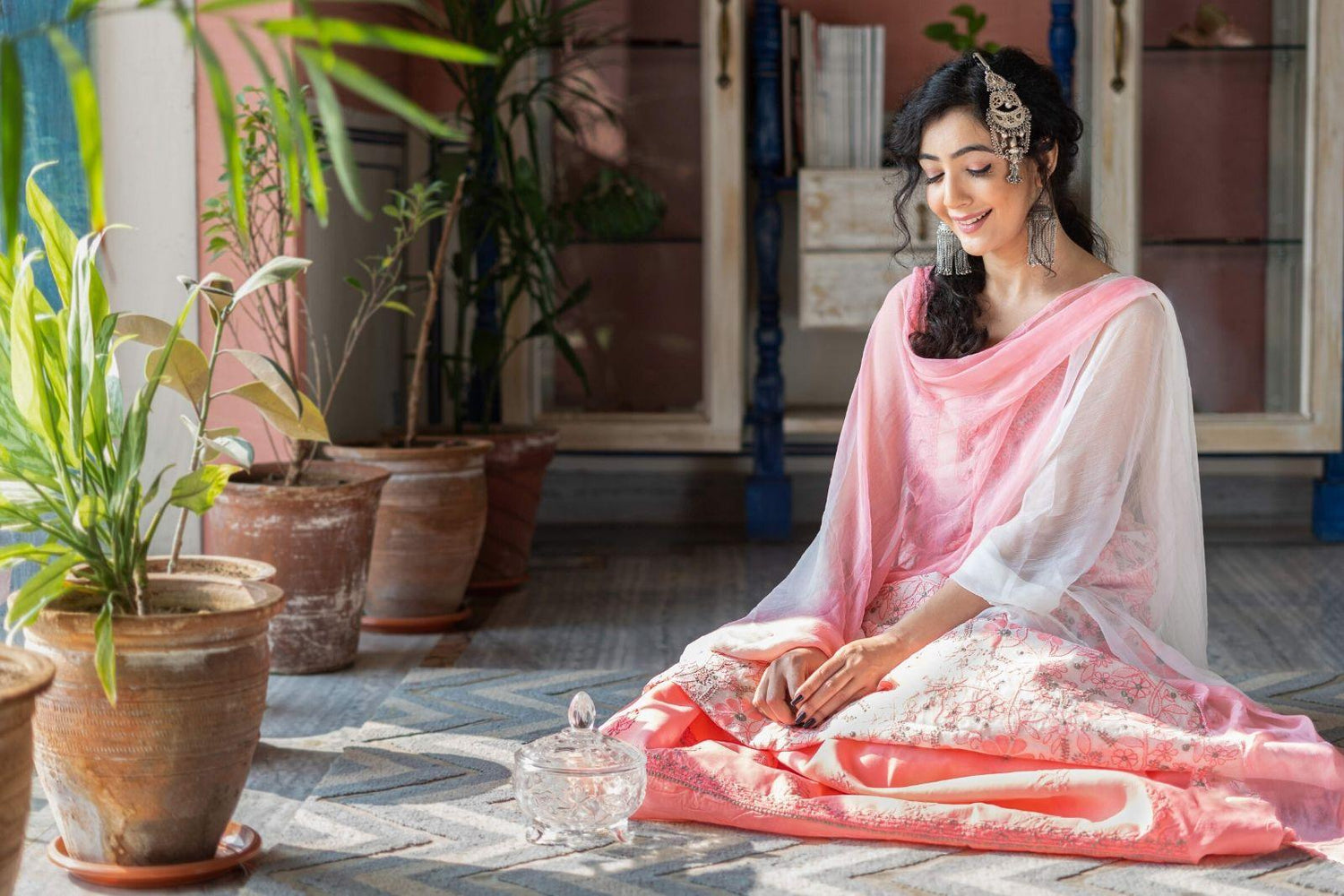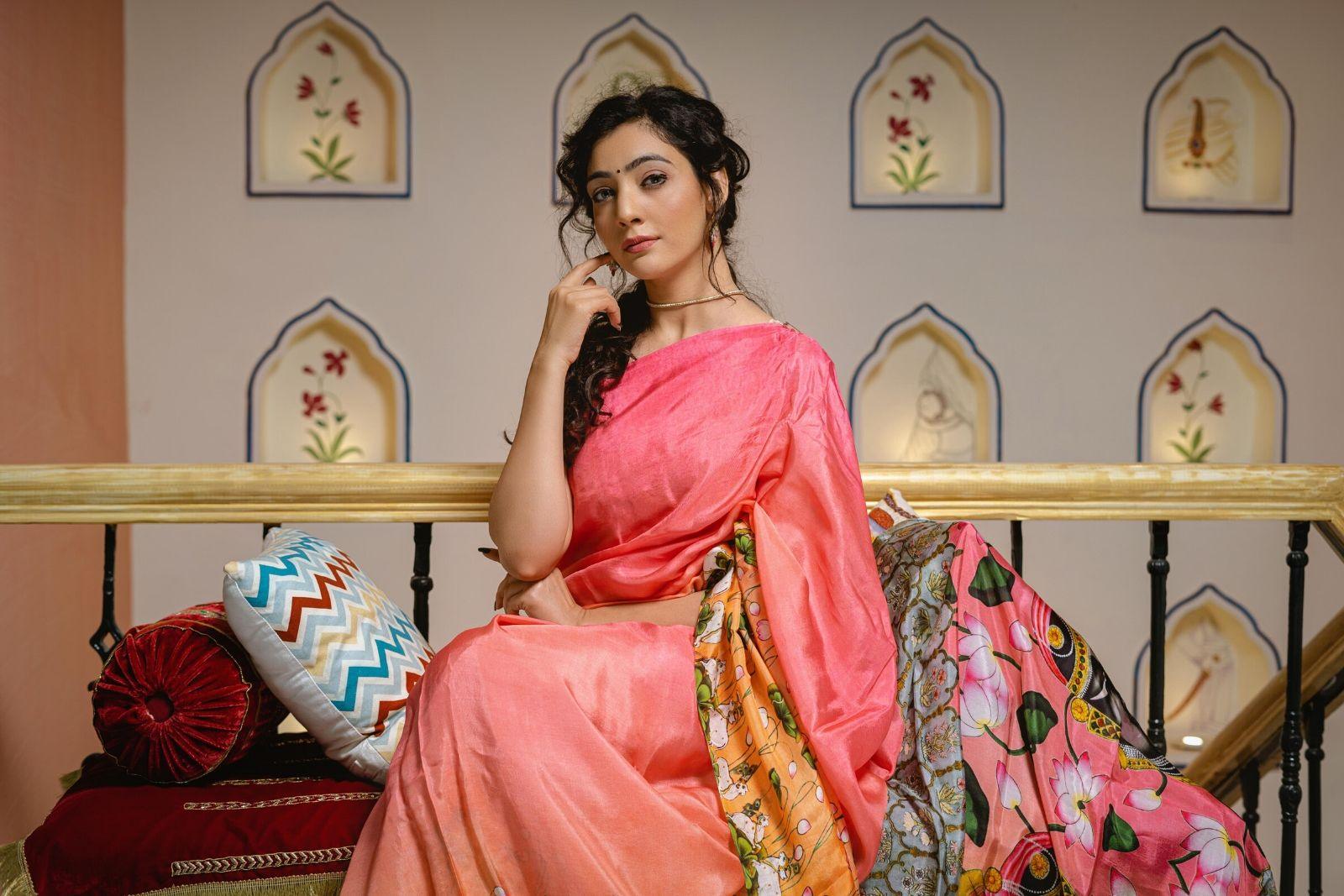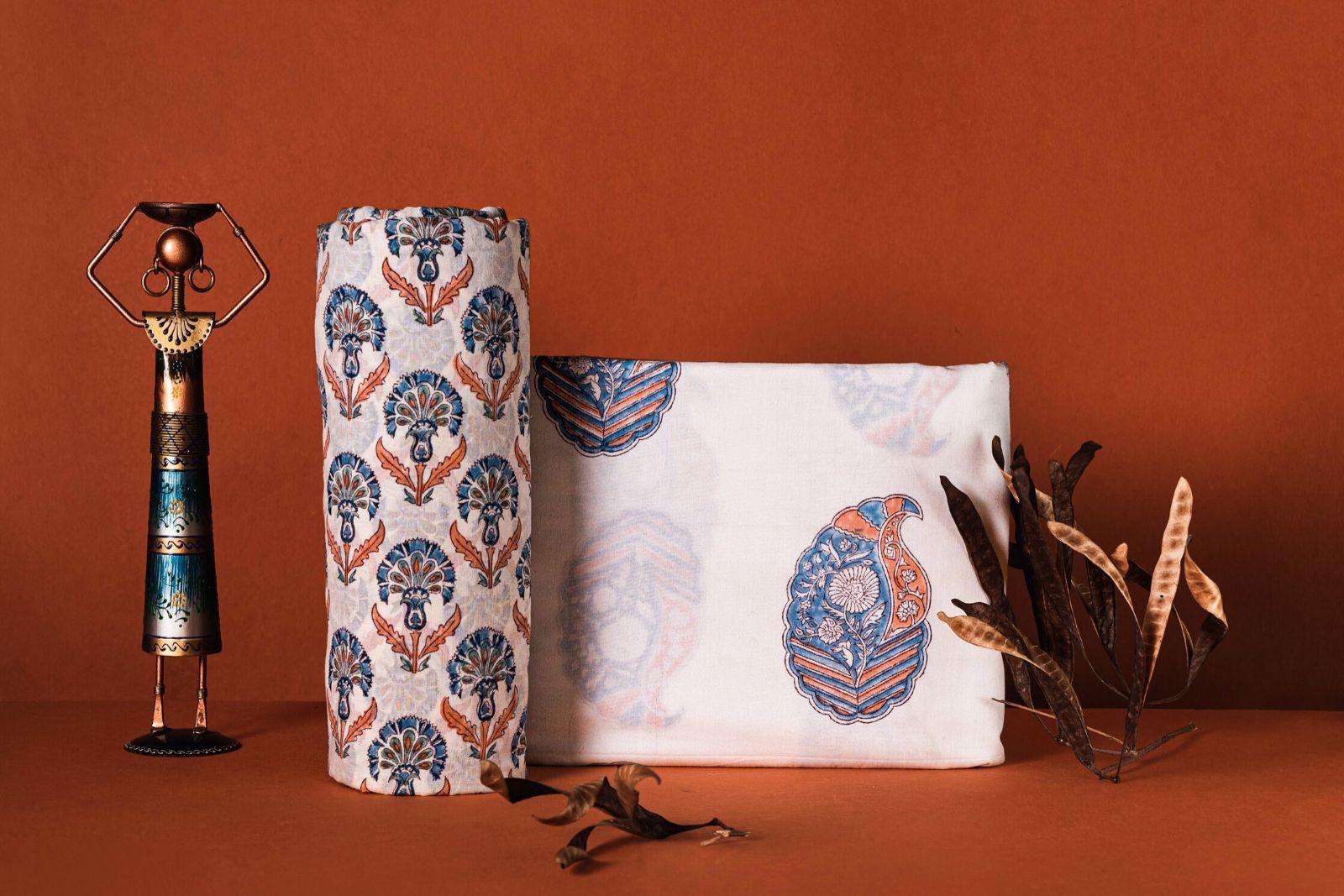India undoubtedly is blessed with a myriad of culture, art forms and crafts. One such craft, which truly captures the essence of the country in terms of its diversity, is Embroidery. Each state, each region has its own form of embroidery which reflects the uniqueness and flavour of that region.
Chikankari, an intricate and delicate form of embroidery truly captures the “tehzeeb” and the “mithaas” of the city it hails from-Lucknow. This craft has truly survived the test of the time. Its golden years in the period of Mughals and Nawabs were followed by a major downfall in later years during the British Rule. Then it again was re-discovered in all its glory in post independent India. Chikankari’s journey has in fact been akin to the journey of life, surviving and standing tall through all its highs and lows.
The Tale behind This Intricate Embroidery
Chikankari is associated with a certain level of sophistication and delicacy. Just like the orchid whose sublime colours soothe the soul, the beauty of this textile craft also lies in its simplicity. The art that dates back to more than four century has mystical tales of origin where in nobody is certain about from where exactly this embroidery originated. One of the narratives is that it started under the reign of Chandragupta Maurya.
However, the more popular lore is that the Persian art was introduced by the Mughals and this version has more takers because the Chikan embroidery flourished most during the Mughal Era. The Mughal Emperor Jahangir’s wife, Noor Jahan, was a known talented embroiderer and she had a particular fondness for Chikankari work. Jahangir too was no less enamoured by this craft and it flourished and prospered under his royal patronage. The fall of the empire did not mean the fall of the art form.
After the demise the Mughal Empire, Chikankari artisans spread all over India and founded various centres for re-establishment and it continues to attract masses for its simplicity and elegance until date. Chikan has adapted itself to the changing times and techniques. Apart from its traditional characteristics, in the recent times Chikankari has adapted additional embellishments like Mukaish, Kamdani, Badla, sequin, bead and mirror work, which gives it a richer look. In fact this craft which was traditionally done on white or pastel coloured base using similar light coloured threads, is changing itself with the shifting times and colourful thread along with silk ones are being used to keep Chikan relevant and up-to-date.
Bateeskari – A Fabriclore Exclusive Collection
Bateeskari- A collection by Fabriclore tells the story of the 32 stitches, which forms the heart of this textile craft. Weavers from the nook and crannies of Lucknow have poured in their years of experience and precision to make keep the soul of this art form intact.
Chikan embroidery is almost like a mighty river which houses numerous tributaries. As mentioned before this art form incorporates 32 different stitching techniques. Some stitching techniques have gained more popularity than the others have however; each of the 32 technique is unique in their own way and has their own story to tell.
Chikankari-Tepchi is undoubtedly one of the most famous of all the 32 techniques. It basically involves a long running or darning stitch worked with six strands on the right side of the fabric taken over four threads and picking up one. It is often deployed to draw out simple shapes and becomes a base for further embroidery.
Bhakiya- bhakiya is like that rebel kid in every family who turns out to be the most intelligent one. This embroidery style is often called the shadow work and reason it is named so is because the embroidery is done on wrong side and its shadow is seen on the right side. Sound almost mystical, doesn’t it?
Phool is a fine detached eyelet stitch. A hole is punched in the fabric and the threads are teased apart. It is then held by small straight stitches all round and worked with one thread on the right side of the bulk fabric. It can be worked with six threads and often forms the centre of a flower.
Murri is the form of stitching which is used to embroider the centre of the flowers in Chikan work motifs. They are typically French knots that are rice-shaped. While Murri is the oldest and most sought-after form of Chikankari, the use of this stitch is depleting due to a decrease in the artisans doing this embroidery.
Jaali stitch is one where the thread is never drawn through the fabric, ensuring that the back portion of the garment looks as impeccable as the front. The warp and weft threads are carefully drawn apart and minute buttonhole stitches are inserted into the cloth.
The other stiches of the bateeskari family include Zanjeera, Katau ,Rahet , Banarsi, Phanda , Darz, Bijli, Ghaas Patti , Chana Patti , Balda , Makra , Kauri , Hathkati , Banjkali , Karan , Kapkapi , Chasm-e-bulbul , TajMahal , Kangan , Dhaniya , Rozan , Sidhaul , Dhaniya Patti , Meharki , Ulti Bakhia , Pechni, Murri , Keel Kanga.
Fabriclore’s Bateeskari Collection is a perfect ode to the Lucknowi weavers. The collection with its sublime shades and exquisite designs is every woman’s dream. There is something for every occasion, something that will make you stand out in every event. The Chikan kurtas with mukaish work or gotta-patti work are perfect for work purpose and they can seamlessly transition into an elegant eveningwear for your office party. If you are looking for something exquisite yet understated for your friend’s Mehendi ceremony the Lucknowi Chikan Hand Embroidery Aari Work Cotton Unstitched Suit Set is the answer to all your prayers. Take your pick from their colour variants of turquoise, beige, off white and yellow.
Along with these subtle and sublime pieces, the collection also boasts of some very gorgeous pieces that make them a perfect match for a wedding or a reception party. The Red Lucknowi Chikan Hand Embroidery Chanderi kurta or the Gulabi Lucknowi chikan hand embroidery Zardozi Parsi work suit are sure to make a statement if worn to a wedding. Another piece, which is sure to make heads turn at every function, is the Hand embroidered Pure Mercerized Chanderi Lucknowi Chikan Kurta. Its gleam and shine almost emanate a certain level of command and authority.
Sure, we all live in a contemporary, modernized world where we are hustling hard to achieve our goals. But let’s be honest, who doesn’t like indulge once in a while and experience what royalty feels like? While we always can’t afford to indulge and luxuriate like the royals, Fabriclore’s Bateeskari collection can help you look like one. With this exquisite collection, look and feel-like the Noor Jahaan of your own world.
Authored by: Sreetama Chakraborty




